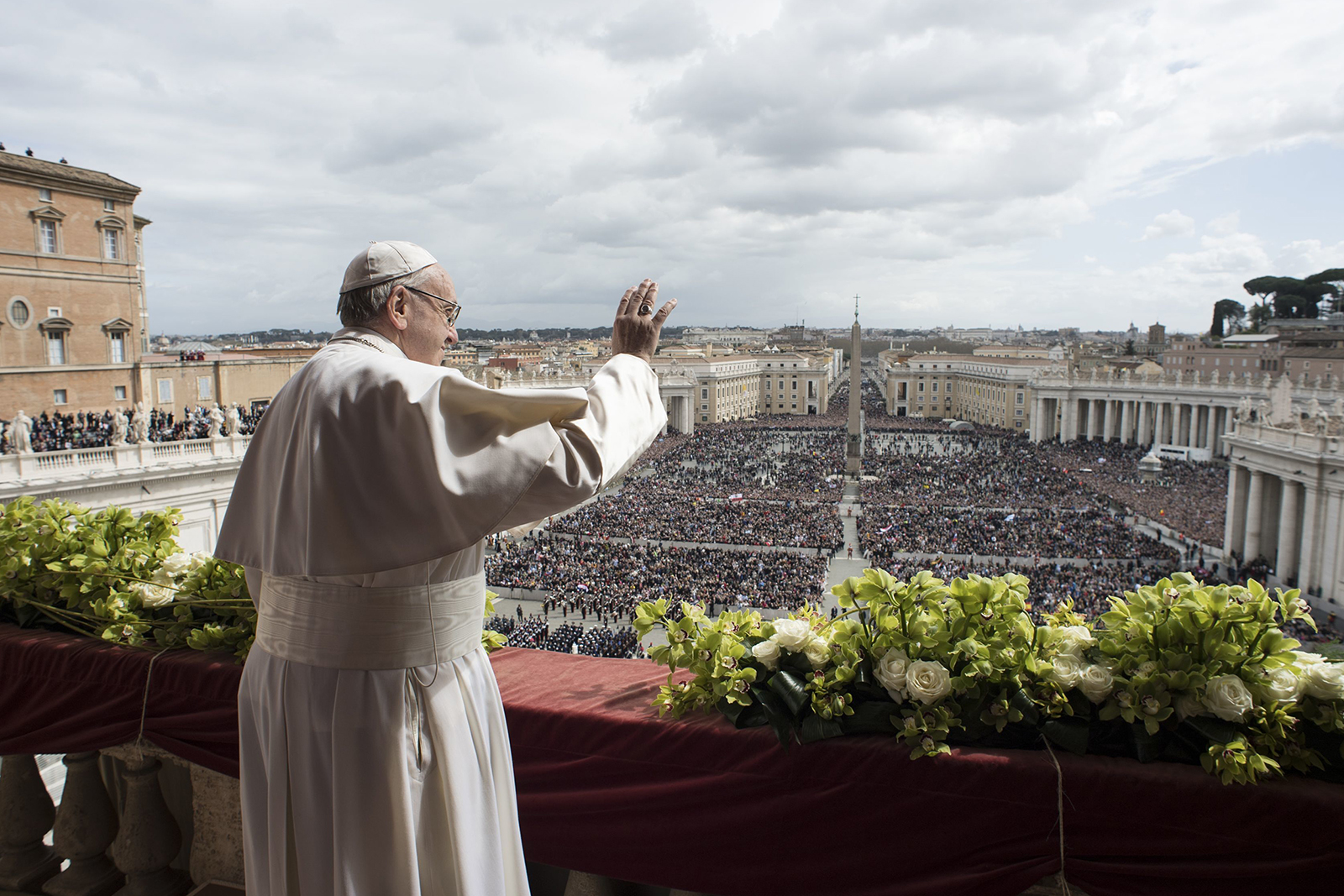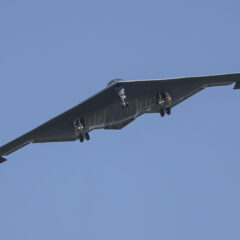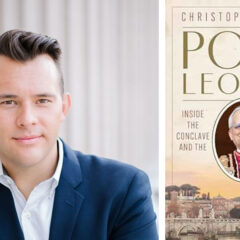VATICAN CITY (RNS) — Pope Francis, who sought to be a bridge maker as he led the Catholic Church in a time of deep polarization, died at 7:35 a.m. on Monday (April 21), at the age of 88, a day after surprising faithful in St. Peter’s Square on Easter Sunday.
“He taught us to live the values of the Gospel with fidelity, courage and universal love, especially toward the poorest and most marginalized,” read a Vatican statement by Cardinal Kevin Farrell, who is charged with overseeing the papal funeral and the election of the next pope.
Francis died of a cerebral stroke that put him into a coma and led to heart failure at the Vatican’s Casa Santa Marta, according to the Vatican. Dr. Andrea Arcangeli, the head of the Vatican’s health department, said in a statement Monday that the pope also experienced episodes of respiratory insufficiency, and had Type 2 diabetes and hypertension.
The pope had been recovering from double pneumonia, for which he was hospitalized in mid-February and released after five weeks. Part of Francis’ lung had been removed at age 21 after a life-threatening pneumonia. As he aged, he suffered a number of ailments, from sciatica to cataracts to chronic knee pain, and visitors to the Vatican were accustomed to seeing the pope struggle to walk when not seated in a wheelchair.
With his pastoral style of leadership and his emphasis on mercy, however, Francis restored the credibility of the church in the eyes of Catholics and non-Catholics after decades of bad news about clergy sex abuse, financial scandals and decline in attendance at Catholic churches.
“The pontificate of Pope Francis has been a breath of fresh air for the Catholic Church globally. He was loved for his simplicity, humility, and warmth,” said Sandie Cornish, senior lecturer in theology at the Australian Catholic University and a member of the Vatican Dicastery for Integral Human Development.
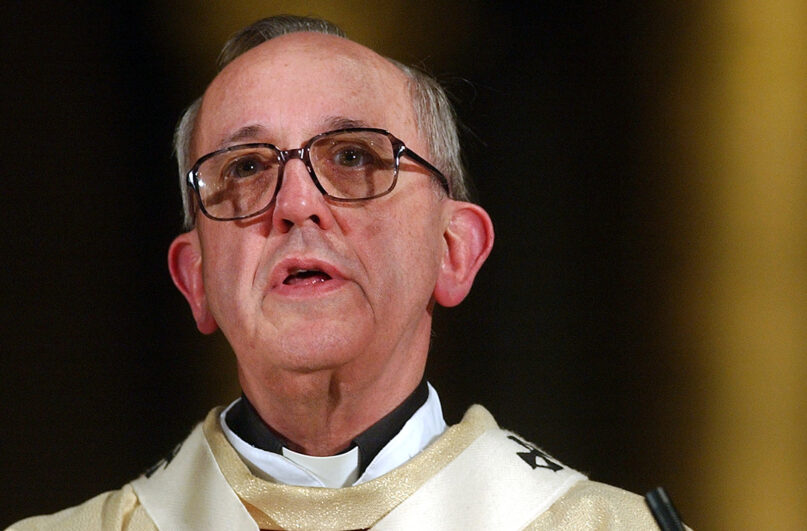
Argentine Cardinal Jorge Mario Bergoglio celebrates a Mass in honor of Pope John Paul II at the Buenos Aires Cathedral in Buenos Aires, Argentina, April 4, 2005. Bergoglio, who took the name of Pope Francis, was elected on March 13, 2013, as the 266th pontiff of the Roman Catholic Church. (AP Photo/Natacha Pisarenko, file)
“The first Jesuit Pope, the first Latin American Pope, the first Pope from outside Europe since the early church, Francis brought a fresh perspective ‘from below’ or ‘from the ends of the earth’ as he put it when he was elected,” Cornish added.
Francis was known for his commitment to welcoming migrants and refugees, the protection of the environment and support for the poor and marginalized, but he remained a polarizing figure for Catholics who mirror society’s political and ideological divisions. He was elected by his fellow cardinals in 2013 as a reformer who would restore credibility to the church’s troubled finances, restructure the Vatican’s Curial departments and the spiritual reform of the church’s leadership and faithful.
Pope Francis succeeded Pope Benedict XVI as leader of the Catholic Church in 2013, after his predecessor shocked the Catholic world by stepping down as pontiff and took the title of emeritus pope. While Benedict remained silent, he was still regarded as a champion of conservative views in contrast to Francis’ softer approach to Catholic doctrine. His presence weighed on Francis’ tenure, despite joint efforts to present a united papacy, until Benedict’s death in 2022.
Born Jorge Mario Bergoglio to a family of Italian immigrants in Bueno Aires, Argentina, on Dec. 17, 1936, Francis spent his youth as a chemical technician and took occasional jobs as a bouncer and janitor. At 22 he began to follow a vocation to become a priest, and after two years as a novitiate he entered the Society of Jesus, the order known as the Jesuits, on March 12, 1960.
Ordained a priest in 1969, he became the provincial superior of the Jesuit order in Argentina in 1973, at a critical time known as the Dirty War, when the country’s military dictatorship relentlessly pursued and imprisoned its critics. Bergoglio was often criticized for not standing up to the regime. His relationship with the global Jesuit order was also strained due to his iron-fist leadership and opposition to liberation theology, which was becoming increasingly popular in Latin America.
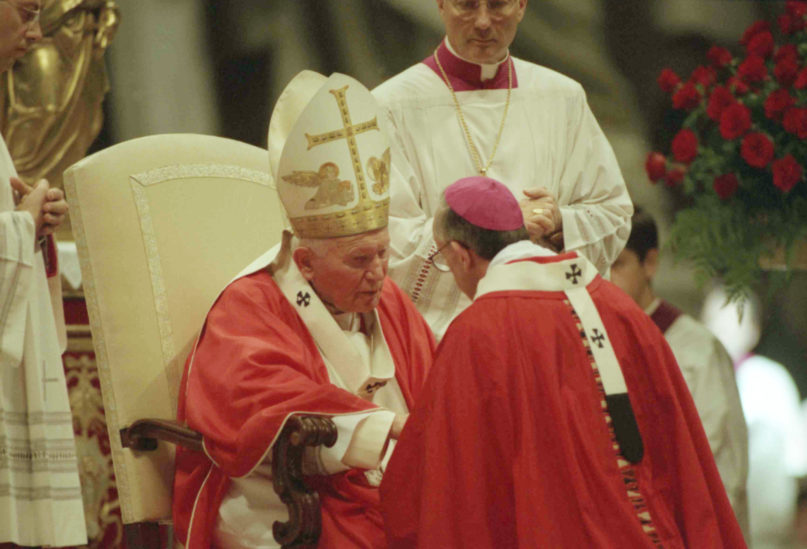
Pope John Paul II greets the archbishop of Buenos Aires, Argentina, Archbishop Jorge Mario Bergoglio, at the Vatican on June 29, 1998. (AP Photo/Sambucetti)
He became the archbishop of Buenos Aires in 1998, quickly earning the title of “slum bishop” for his ministry in the city’s poverty-stricken favelas. In 2001, Pope John Paul II made Bergoglio a cardinal and appointed him to a number of Vatican Curial positions. He had an influential role in creating the Aparecida document, a 2007 statement by Latin America’s Catholic bishops emphasizing the importance of the family, the environment and evangelization.
At the conclave after John Paul’s death in 2005, Bergoglio was one of the cardinals spoken of as “papabile,” or a credible candidate for the papacy, but the cardinals chose the continuity of Benedict, who as Joseph Ratzinger had been John Paul’s fierce doctrinal chief, sometimes called “God’s Rottweiler.”
When, in 2013, the cardinals did make Bergoglio St. Peter’s 265th successor, he took the name “Francis” in honor of St. Francis of Assisi, known for his devotion to the poor and the environment. The unassuming “Buonasera” (good evening) that he uttered to the waiting faithful in St. Peter’s Square after his election foreshadowed his humble approach to the papacy. Eschewing the grander Apostolic Palace, Francis chose to live in the hotel-like room of Domus Sanctae Marthae and eat with other Curial members. He opted for simple clothing and jewelry, distancing himself from the pomp and regalia of his predecessors.
He immediately set about making much-needed structural and economic reforms, continuing the work started by Benedict in the Institute for Religious Works, known as the Vatican bank, but more sensationally allowing 10 individuals, including Cardinal Angelo Becciu, to be tried for suspected fraud, embezzlement and money laundering. Francis stripped the powerful Secretariat of State of its investment assets and injected transparency into the Vatican’s acquisitions process. His Apostolic Constitution, Paredicate Evangelium (Preach the Gospel), merged many Vatican departments, eliminated redundancies and promoted more involvement of lay Catholics.
Francis’ sometimes tough reforms won him determined opponents inside the Vatican, but he bolstered his position by selecting some 80% of the cardinals heading 10 consistories. He gave red hats to prelates from a wide range of countries, including some that never had a cardinal before, creating the most diverse College of Cardinals in the history of the church.
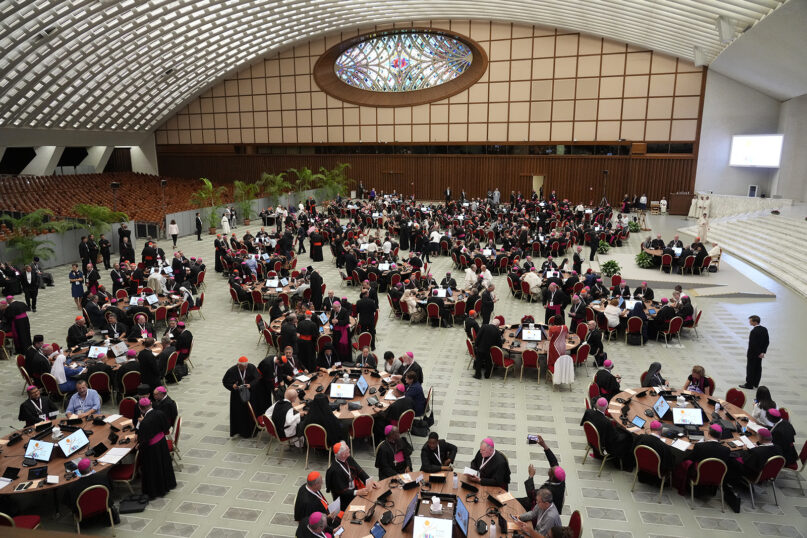
Pope Francis, sitting at right, participates in the opening session of the 16th General Assembly of the Synod of Bishops in the Paul VI Hall at the Vatican, Oct. 4, 2023. (AP Photo/Gregorio Borgia)
The pope sought to eliminate clericalism — the preferential treatment assumed by priests in the church that is as often awarded by lay Catholics. “The pope’s actions had the purpose of purifying the church to a great effect,” said Massimo Borghesi, a philosophy professor at the University of Perugia and author of “The Mind of Pope Francis: Jorge Mario Bergoglio’s Intellectual Journey.”
Francis’ efforts “led to the great oppositions and contrasts that he faced within the church,” Borghesi added.
To reconcile these tensions, Francis took a keen interest in calling summits of bishops, known as synods, to address key challenges facing the church, and stirring new conversations and discussions about female ordination and a married priesthood, inevitably drawing vocal opposition. The three-year Synod on Synodality, ending in October 2024, aimed to take the pulse of Catholics all over the world and to expand the people and views that go into the church’s decision-making.
Yet Francis made few changes to Catholic teaching itself. He enshrined the church’s opposition to the death penalty within the catechism and opened the door for divorced and remarried Catholics to receive the Eucharist with the spiritual guidance of a priest. He took a stronger stance against nuclear weapons and restricted the definition of just war that had been used by politicians to justify foreign interventions.
But when it came to questions of homosexuality, the female priesthood, abortion or euthanasia, “Bergoglio didn’t change a thing,” Borghesi said. “Conservatives thought he was a progressive pope, but from a traditional and dogmatic view, he was a conservative,” the professor said. Francis spoke candidly in opposition to abortion and criticized gender theories as a form of “ideological colonization.”
Pope Francis, in pictures
By Claire Giangravé · April 21, 2025
The life and papacy of Pope Francis, in pictures.
Pope Francis arrives for his weekly general audience in St. Peter’s Square at the Vatican, Oct. 12, 2022. (AP Photo/Andrew Medichini)
Pope John Paul II greets the archbishop of Buenos Aires, Archbishop Jorge Mario Bergoglio, at the Vatican on June 29, 1998. (AP Photo/Sambucetti)
Argentine Cardinal Jorge Mario Bergoglio celebrates a Mass in honor of Pope John Paul II at the Buenos Aires Cathedral in Buenos Aires, Argentina, April 4, 2005. Bergoglio, who took the name of Pope Francis, was elected on Wednesday, March 13, 2013, as the 266th pontiff of the Roman Catholic Church. (AP Photo/Natacha Pisarenko, file)
FILE - Pope Francis waves to the crowd from the central balcony of St. Peter's Basilica at the Vatican, March 13, 2013. When Jorge Bergoglio of Argentina became Pope Francis, much of his home country celebrated as if it had just won a soccer World Cup championship. A decade later, the first Latin American leader of the Catholic Church generates divided opinions. (AP Photo/Gregorio Borgia, File)
Pope Francis approaches priests with an Argentine flag as he arrives in St. Peter's Square for his inaugural Mass at the Vatican on March 19, 2013. (Photo by Stefano Rellandini/Reuters)
St. Peter's Square during Pope Francis' inaugural Mass on Tuesday, March 19, 2013, at the Vatican. (RNS photo/Andrea Sabbadini)
Pope Francis, surrounded by shells of destroyed churches, leads a prayer for the victims of war at Hosh al-Bieaa Church Square, in Mosul, Iraq, once the de-facto capital of IS, Sunday, March 7, 2021. The long 2014-2017 war to drive IS out left ransacked homes and charred or pulverized buildings around the north of Iraq, all sites Francis visited on Sunday. (AP Photo/Andrew Medichini)
Pope Francis talks to the Curia in the Clementina Hall at the Vatican on Dec. 22, 2014. (AP Photo/Andreas Solaro, Pool)
FILE - Pope Emeritus Benedict XVI, left, greets Pope Francis prior to the start of the beatification ceremony of Pope Paul VI and a mass for the closing of a two-week synod on family issues, in St. Peter's Square at the Vatican, Sunday, Oct. 19, 2014. (AP Photo/Gregorio Borgia, File)
Pope Francis prays at the Western Wall, the holiest place where Jews can pray, in the old city of Jerusalem, Israel, Monday, May 26, 2014. (AP Photo/Andrew Medichini, Pool)
Filipino Cardinal Luis Tagle, left, shows Pope Francis how to give the popular hand sign for "I love you" at the Mall of Asia arena in Manila, Philippines, Friday, Jan. 16, 2015. (AP Photo/Wally Santana)
President Barack Obama and Pope Francis walk along the White House Colonnade on Sept. 23, 2015. (Photo by Pete Souza/The White House)
A nun reflects during a solemn moment as Pope Francis leads a Holy Mass for the Martyrs of Uganda at the area of the Catholic Sanctuary in the Namugongo area of Kampala, Uganda, on Nov. 28, 2015. (AP Photo/Ben Curtis)
Pope Francis shares a reflection during an evening prayer service at St. Patrick's Cathedral in New York, Sept. 24, 2015. Pope Francis was on a five-day trip to the USA, which included stops in Washington DC, New York and Philadelphia, after a three-day stay in Cuba. (Photo by Mary Altaffer/Reuters)
Pope Francis embraces two good friends of his traveling with him, Argentine Rabbi Abraham Skorka, left, and Omar Abboud, leader of Argentina's Muslim community, partially seen behind the pope, as he visits the Western Wall in Jerusalem's Old City, Israel, Monday, May 26, 2014. Both friends joined the pontiff's official delegation for the trip in a sign of interfaith friendship. (AP Photo/Andrew Medichini, Pool)
Pope Francis speaks in front the Basilica of Saint Mary Ausiliatrice (Mary Help of Christians) during a two-day pastoral visit in Turin, Italy, on June 21, 2015. (Photo by Alessandro Garofalo/Reuters)
Pope Francis, left, is escorted by Ecumenical Patriarch Bartholomew I, during a visit to the Greek island of Lesbos on April 16, 2016. (Andrea Bonetti/Greek Prime Minister's Office via AP)
Pope Francis attends his general audience in Saint Peter's Square at the Vatican, on November 16, 2016. (Photo by Alessandro Bianchi/Reuters)
Pope Francis kisses a child as he visits the refugee camp of Saint Sauveur in the capital Bangui, Central African Republic, on November 29, 2015. Photo courtesy of REUTERS/Stefano Rellandini
*Editors: This photo may only be republished with RNS-JUBILEE-AFRICA, originally transmitted on December 21, 2015.
Pope Francis greets migrants and refugees at the Moria refugee camp near the port of Mytilene, on the Greek island of Lesbos, April 16, 2016. (Filippo Monteforte/Pool Photo via AP)
President Donald Trump stands next to Pope Francis during a private audience at the Vatican on May 24, 2017. (AP Photo/Evan Vucci)
In this June 28, 2017, file photo, Pope Francis, left, and Emeritus Pope Benedict XVI meet each other on the occasion of the elevation of five new cardinals at the Vatican. (L'Osservatore Romano/Pool photo via AP, File)
Pope Francis is greeted by youth during an audience for middle schools belonging to the "Cavalieri" group, which promotes Christian life for youth, in the Paul VI Hall, at the Vatican, on June 2, 2017. (L' Osservatore Romano via AP, Pool)
Pope Francis speaks to the crew aboard the International Space Station from the Vatican, Thursday, Oct. 26, 2017. Pope Francis' hookup Thursday will mark the second papal phone call to space: Pope Benedict XVI rang the space station in 2011, and peppered its residents with questions about the future of the planet and the environmental risks it faced. (L'Osservatore Romano/Pool Photo via AP)
Pope Francis tries on a cap he was offered as he leaves at the end of his weekly general audience, in St. Peter's square, at the Vatican, Wednesday, Nov. 21, 2018. (AP Photo/Andrew Medichini)
Pope Francis blows out a candle atop of a cake he was offered on the eve of his 82nd birthday during an audience with children and family from the dispensary of Santa Marta, a Vatican charity that offers special help to mothers and children in need, in the Paul VI hall at the Vatican, on Dec. 16, 2018. (AP Photo/Gregorio Borgia)
Pope Francis, lower center, leaves at the end of a canonization ceremony in St. Peter's Square at the Vatican on Oct. 14, 2018. Pope Francis has praised two of the towering figures of the 20th-century Catholic Church as prophets who shunned wealth and looked out for the poor as he canonized the modernizing Pope Paul VI and martyred Salvadoran Archbishop Oscar Romero. Francis declared the two men saints at a Mass in St. Peter's Square before tens of thousands of pilgrims, a handful of presidents and some 5,000 Salvadoran pilgrims who traveled to Rome. (AP Photo/Andrew Medichini)
Pope Francis arrives in his popemobile for a Holy Mass at the Shrine of the Mother of God, in Aglona, Latvia, on Sept. 24, 2018. Francis visited Lithuania, Latvia and Estonia to mark their 100th anniversaries of independence and to encourage the faith in the Baltics, which saw five decades of Soviet-imposed religious repression and state-sponsored atheism. (AP Photo/Mindaugas Kulbis)
Pope Francis smiles during services at Croke Park, Dublin on Aug. 25, 2018, during the World Meeting of Families 2018. (Photo by Maxwell Photography/WMOF2018)
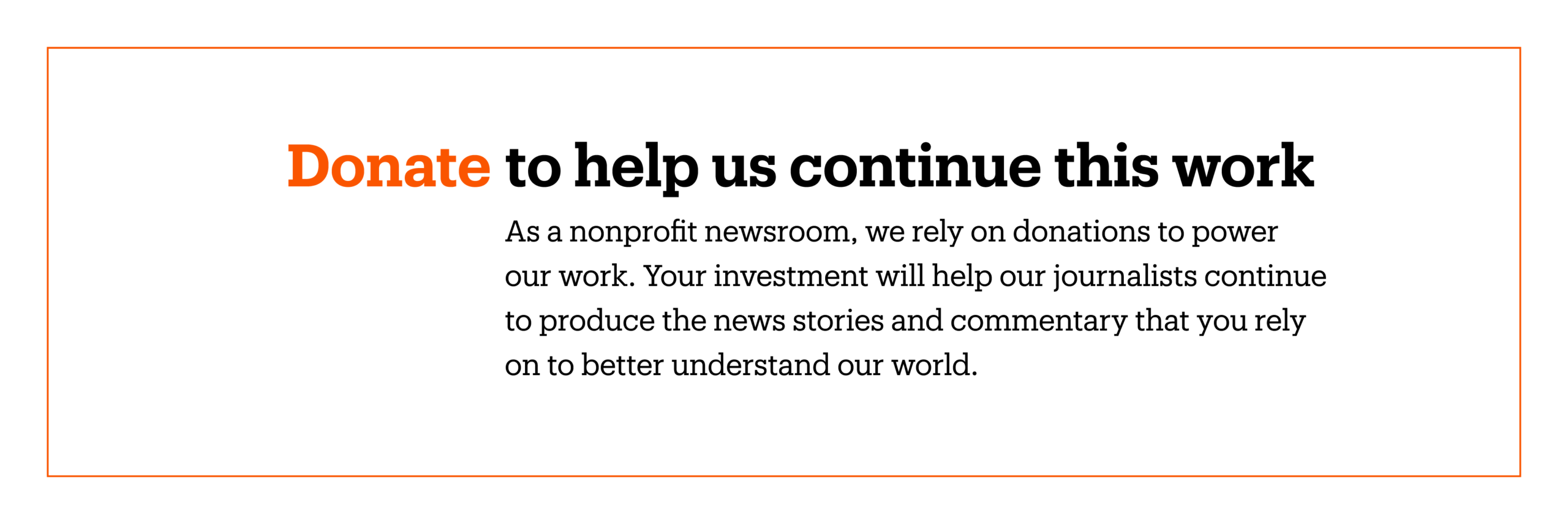 Pope Francis washes the feet of inmates during his visit to the Regina Coeli detention center in Rome, Thursday, March 29, 2018, where he celebrated the "Missa in Coena Domini". Pope Francis visit to a prison on Holy Thursday to wash the feet of some inmates, stresses in a pre-Easter ritual that a pope must serve society's marginalized and give them hope. (Vatican Media via AP)
Pope Francis arrives on the pope mobile to celebrate Mass at the Las Palmas Air Base in Lima, Peru, Sunday, Jan. 21, 2018. (AP Photo/Alessandra Tarantino)
Pope Francis lies down in prayer during the Good Friday Passion of Christ Mass inside St. Peter's Basilica at the Vatican on March 30, 2018. (AP Photo/Andrew Medichini)
Pope Francis is silhouetted during a private audience at the Vatican on Dec. 14, 2019. (Yara Nardi/Pool photo via AP)
Students practice flipping boards with photos to reveal a full-mosaic portrait of Pope Francis before a Holy Mass at National Stadium in Bangkok, Thailand, Thursday, Nov. 21, 2019. (AP Photo/Sakchai Lalit)
Pope Francis leaves the morning session of the Amazon synod, at the Vatican, Saturday, Oct. 12, 2019. Pope Francis is holding a three-week meeting on preserving the rainforest and ministering to its native people as he fended off attacks from conservatives who are opposed to his ecological agenda. (AP Photo/Alessandra Tarantino)
A man lifts a giant mask of Pope Francis off his head as he waits outside the Apostolic Nunciature Embassy of the Holy See in Bangkok on Nov. 20, 2019. Pope Francis toured Thailand and Japan on a trip, part of a mission to boost the morale of those countries’ tiny minority Catholic communities. (AP Photo/Manish Swarup)
Pope Francis arrives for his weekly general audience, in St. Peter's Square, at the Vatican, Wednesday, Nov. 6, 2019. (AP Photo/Andrew Medichini)
Pope Francis prays during his weekly general audience, at the Vatican, on Sept. 11, 2019. (AP Photo/Andrew Medichini)
Pope Francis speaks to indigenous groups in Puerto Maldonado, Peru, on Jan. 19, 2018. Standing with thousands of indigenous Peruvians, Francis declared the Amazon the "heart of the church" and called for a three-fold defense of its life, land and cultures. (AP Photo/Alessandra Tarantino)
Pope Francis is framed by cellphones as he arrives for his weekly general audience in the Pope Paul VI Hall at the Vatican on Jan. 9, 2019. (AP Photo/Andrew Medichini)
Pope Francis greets Sheikh Ahmed el-Tayeb, the grand imam of Egypt's Al-Azhar, after an interreligious meeting at the Founder's Memorial in Abu Dhabi, United Arab Emirates, on Feb. 4, 2019. Pope Francis has asserted in the first-ever papal visit to the Arabian Peninsula that religious leaders have a duty to reject all war and commit themselves to dialogue. (AP Photo/Andrew Medichini)
Flanked by Panama's President Juan Carlos Varela, right, and first lady Lorena Castillo, Pope Francis arrives at the foreign ministry headquarters Palacio Bolivar, in Panama City, Thursday, Jan. 24, 2019. (AP Photo/Alessandra Tarantino)
In this Tuesday, Oct. 20, 2020 file photo, Pope Francis puts on his face mask as he attends an inter-religious ceremony for peace in the Basilica of Santa Maria in Aracoeli, in Rome. (AP Photo/Gregorio Borgia, File)
Pope Francis delivers his blessing from inside the Apostolic library at the Vatican on March 15, 2020, to an empty St. Peter’s Square. The pope praised people who could risk contagion to help the poor and the homeless even as fears of coronavirus spread prompts ever more countries to restrict ways of everyday life. (Vatican News via AP)
The Patriarch of the Syriac Orthodox Church, Moran Mor Ignatius Aphrem II, second from left, the head of the Catholicosate of the Great House of Cilicia of the Armenian Apostolic Church, Aram I, third from left, Pope Francis, fourth from left, Cardinal Bechara Boutros al-Rahi, firfth from left, Patriarch of Antioch and All the East for the Syriac Catholic Church, Ignatius Youssef III Younan, right, arrive in St. Peter's Basilica to attend a prayer for Lebanon at the Vatican, Thursday, July 1, 2021. (AP Photo/Gregorio Borgia)
Pope Francis meets Spider-Man, who presents him with his mask, at the end of his weekly general audience with a limited number of faithful in the San Damaso Courtyard at the Vatican, Wednesday, June 23, 2021. The masked man works with sick children in hospitals. (AP Photo/Andrew Medichini)
President Joe Biden, left, shakes hands with Pope Francis as they meet at the Vatican, Friday, Oct. 29, 2021. (Photo by Vatican Media)
Pope Francis celebrates the Easter Vigil in St. Peter's Basilica as coronavirus pandemic restrictions stay in place for a second year running, at the Vatican, Saturday, April 3, 2021. (Remo Casilli/Pool photo via AP)
Pope Francis arrives to open the Holy Door of St. Mary in Collemaggio Basilica and start the jubilee of forgiveness, in L'Aquila, central Italy, Sunday, Aug. 28, 2022. Pope Francis will be the first pope since Celestine V to open this Holy Door, the first in history, established with the Bull of Forgiveness of 29 September 1294 by Pope Celestine V. (AP Photo/Riccardo De Luca)
Pope Francis shows a flag that was brought to him from Bucha, Ukraine, during his weekly general audience in the Paul VI Hall, at the Vatican, April 6, 2022. (AP Photo/Alessandra Tarantino)
FILE - Pope Francis meets a group of nuns during his weekly general audience in the Pope Paul VI Hall at the Vatican, on Aug. 30, 2023. (AP Photo/Andrew Medichini, File)
Pope Francis puts on an Indigenous headdress during a meeting with Indigenous communities, including First Nations, Métis and Inuit, at Our Lady of Seven Sorrows Catholic Church in Maskwacis, near Edmonton, Canada, Monday, July 25, 2022. Pope Francis had a "penitential" visit to Canada to beg forgiveness from survivors of the country's residential schools, where Catholic missionaries contributed to the "cultural genocide" of generations of Indigenous children by trying to stamp out their languages, cultures and traditions. Francis visited the cemetery at the former residential school in Maskwacis. (AP Photo/Eric Gay)
Pope Francis presides over the First Vespers and Te Deum, the rite of thanksgiving for the end of the year, in Saint Peter's Basilica at the Vatican, Sunday, Dec. 31, 2023. (AP Photo/Andrew Medichini)
Pope Francis arrives for his weekly general audience in St. Peter’s Square at the Vatican, March 8, 2023. (AP Photo/Andrew Medichini, File)
A priest holds a sacrament bowl showing a photograph of Pope Francis at a Holy Mass at the John Garang Mausoleum in Juba, South Sudan, Sunday, Feb. 5, 2023. (AP Photo/Ben Curtis)
Pope Francis, right, presides over the funeral Mass of Emeritus Pope Benedict XVI in St. Peter's Square at the Vatican, Jan. 5, 2023. (Vatican Media)
Pope Francis prays in front of a Nativity scene crafted in the West Bank city of Bethlehem, as he arrives for a meeting with the donors of the fir tree set up in St. Peter's Square as a Christmas tree and those who have crafted the life-size Nativity scene at the tree's feet, in the Paul VI Hall at the Vatican, Saturday, Dec. 7, 2024. (AP Photo/Andrew Medichini)
Pope Francis is greeted by gondoliers upon his arrival in Venice, Italy, Sunday, April 28, 2024. The Pontiff arrived for his first-ever visit to the lagoon town including the Vatican pavilion at the 60th Biennal of Arts. (AP Photo/Alessandra Tarantino)
Cardinals attend a Mass presided by Pope Francis in St. Peter's Basilica at the Vatican, Nov. 24, 2024. (AP Photo/Andrew Medichini)
East Timorese crowd Tasitolu park for Pope Francis' Mass in Dili, East Timor, Tuesday, Sept. 10, 2024. (AP Photo/Firdia Lisnawati)
Pope Francis looks at American comedians Stephen Colbert, Chris Rock and Jimmy Fallon, among others, as he meets with more than 100 comedians from around the world at the Vatican on June 14, 2024, encouraging them to cheer people up and help people see reality with all its contradictions. (Photo by Simone Risoluti/Vatican Media)
Pope Francis washes and kisses the feet of 12 women inmates of the Rebibbia prison in the outskirts of Rome on Holy Thursday, March 28, 2024, a ritual meant to emphasize his vocation of service and humility. (Photo by Vatican Media)
Pope Francis waves to the faithful from his popemobile at the end of a weekly general audience in St. Peter’s Square, at the Vatican, April 24, 2024. (AP Photo/Alessandra Tarantino)
Pope Francis is joined by children dressed with costumes inspired by nativity characters during a Mass in St. Peter's Basilica at the Vatican on New Year's Day, Wednesday, Jan. 1, 2025. (AP Photo/Andrew Medichini)
A woman kneels at the foot of a statue of St. John Paul II outside the Agostino Gemelli Polyclinic in Rome, Feb. 16, 2025, where Pope Francis was hospitalized Friday after a weeklong bout of bronchitis worsened. Francis is receiving drug therapy for a respiratory tract infection that made impossible for him to attend the traditional Sunday public blessing after the noon Angelus prayer. (AP Photo/Alessandra Tarantino)
Pope Francis leaves the Agostino Gemelli Polyclinic in Rome, Sunday, March 23, 2025, where he was admitted on Feb. 14 for bilateral pneumonia. (AP Photo/Marco Ravagli)
Pope Francis arrives at the end of the Mass on Palm Sunday in St. Peter's Square at the Vatican, Sunday, April 13, 2025. (AP Photo/Gregorio Borgia)
Pope Francis tours St. Peter's Square in his popemobile after bestowing the Urbi et Orbi (Latin for to the city and to the world) blessing at the end of the Easter Mass, which was presided over by Cardinal Angelo Comastri, in St. Peter's Square at the Vatican, Sunday, April 20, 2025. (AP Photo/Gregorio Borgia)
A photograph of the late Pope Francis is placed at Saint Anthony Catholic Church in Istanbul, Turkey, after the announcement of his death, Monday, April 21, 2025. (AP Photo/Khalil Hamra)
Pope Francis washes the feet of inmates during his visit to the Regina Coeli detention center in Rome, Thursday, March 29, 2018, where he celebrated the "Missa in Coena Domini". Pope Francis visit to a prison on Holy Thursday to wash the feet of some inmates, stresses in a pre-Easter ritual that a pope must serve society's marginalized and give them hope. (Vatican Media via AP)
Pope Francis arrives on the pope mobile to celebrate Mass at the Las Palmas Air Base in Lima, Peru, Sunday, Jan. 21, 2018. (AP Photo/Alessandra Tarantino)
Pope Francis lies down in prayer during the Good Friday Passion of Christ Mass inside St. Peter's Basilica at the Vatican on March 30, 2018. (AP Photo/Andrew Medichini)
Pope Francis is silhouetted during a private audience at the Vatican on Dec. 14, 2019. (Yara Nardi/Pool photo via AP)
Students practice flipping boards with photos to reveal a full-mosaic portrait of Pope Francis before a Holy Mass at National Stadium in Bangkok, Thailand, Thursday, Nov. 21, 2019. (AP Photo/Sakchai Lalit)
Pope Francis leaves the morning session of the Amazon synod, at the Vatican, Saturday, Oct. 12, 2019. Pope Francis is holding a three-week meeting on preserving the rainforest and ministering to its native people as he fended off attacks from conservatives who are opposed to his ecological agenda. (AP Photo/Alessandra Tarantino)
A man lifts a giant mask of Pope Francis off his head as he waits outside the Apostolic Nunciature Embassy of the Holy See in Bangkok on Nov. 20, 2019. Pope Francis toured Thailand and Japan on a trip, part of a mission to boost the morale of those countries’ tiny minority Catholic communities. (AP Photo/Manish Swarup)
Pope Francis arrives for his weekly general audience, in St. Peter's Square, at the Vatican, Wednesday, Nov. 6, 2019. (AP Photo/Andrew Medichini)
Pope Francis prays during his weekly general audience, at the Vatican, on Sept. 11, 2019. (AP Photo/Andrew Medichini)
Pope Francis speaks to indigenous groups in Puerto Maldonado, Peru, on Jan. 19, 2018. Standing with thousands of indigenous Peruvians, Francis declared the Amazon the "heart of the church" and called for a three-fold defense of its life, land and cultures. (AP Photo/Alessandra Tarantino)
Pope Francis is framed by cellphones as he arrives for his weekly general audience in the Pope Paul VI Hall at the Vatican on Jan. 9, 2019. (AP Photo/Andrew Medichini)
Pope Francis greets Sheikh Ahmed el-Tayeb, the grand imam of Egypt's Al-Azhar, after an interreligious meeting at the Founder's Memorial in Abu Dhabi, United Arab Emirates, on Feb. 4, 2019. Pope Francis has asserted in the first-ever papal visit to the Arabian Peninsula that religious leaders have a duty to reject all war and commit themselves to dialogue. (AP Photo/Andrew Medichini)
Flanked by Panama's President Juan Carlos Varela, right, and first lady Lorena Castillo, Pope Francis arrives at the foreign ministry headquarters Palacio Bolivar, in Panama City, Thursday, Jan. 24, 2019. (AP Photo/Alessandra Tarantino)
In this Tuesday, Oct. 20, 2020 file photo, Pope Francis puts on his face mask as he attends an inter-religious ceremony for peace in the Basilica of Santa Maria in Aracoeli, in Rome. (AP Photo/Gregorio Borgia, File)
Pope Francis delivers his blessing from inside the Apostolic library at the Vatican on March 15, 2020, to an empty St. Peter’s Square. The pope praised people who could risk contagion to help the poor and the homeless even as fears of coronavirus spread prompts ever more countries to restrict ways of everyday life. (Vatican News via AP)
The Patriarch of the Syriac Orthodox Church, Moran Mor Ignatius Aphrem II, second from left, the head of the Catholicosate of the Great House of Cilicia of the Armenian Apostolic Church, Aram I, third from left, Pope Francis, fourth from left, Cardinal Bechara Boutros al-Rahi, firfth from left, Patriarch of Antioch and All the East for the Syriac Catholic Church, Ignatius Youssef III Younan, right, arrive in St. Peter's Basilica to attend a prayer for Lebanon at the Vatican, Thursday, July 1, 2021. (AP Photo/Gregorio Borgia)
Pope Francis meets Spider-Man, who presents him with his mask, at the end of his weekly general audience with a limited number of faithful in the San Damaso Courtyard at the Vatican, Wednesday, June 23, 2021. The masked man works with sick children in hospitals. (AP Photo/Andrew Medichini)
President Joe Biden, left, shakes hands with Pope Francis as they meet at the Vatican, Friday, Oct. 29, 2021. (Photo by Vatican Media)
Pope Francis celebrates the Easter Vigil in St. Peter's Basilica as coronavirus pandemic restrictions stay in place for a second year running, at the Vatican, Saturday, April 3, 2021. (Remo Casilli/Pool photo via AP)
Pope Francis arrives to open the Holy Door of St. Mary in Collemaggio Basilica and start the jubilee of forgiveness, in L'Aquila, central Italy, Sunday, Aug. 28, 2022. Pope Francis will be the first pope since Celestine V to open this Holy Door, the first in history, established with the Bull of Forgiveness of 29 September 1294 by Pope Celestine V. (AP Photo/Riccardo De Luca)
Pope Francis shows a flag that was brought to him from Bucha, Ukraine, during his weekly general audience in the Paul VI Hall, at the Vatican, April 6, 2022. (AP Photo/Alessandra Tarantino)
FILE - Pope Francis meets a group of nuns during his weekly general audience in the Pope Paul VI Hall at the Vatican, on Aug. 30, 2023. (AP Photo/Andrew Medichini, File)
Pope Francis puts on an Indigenous headdress during a meeting with Indigenous communities, including First Nations, Métis and Inuit, at Our Lady of Seven Sorrows Catholic Church in Maskwacis, near Edmonton, Canada, Monday, July 25, 2022. Pope Francis had a "penitential" visit to Canada to beg forgiveness from survivors of the country's residential schools, where Catholic missionaries contributed to the "cultural genocide" of generations of Indigenous children by trying to stamp out their languages, cultures and traditions. Francis visited the cemetery at the former residential school in Maskwacis. (AP Photo/Eric Gay)
Pope Francis presides over the First Vespers and Te Deum, the rite of thanksgiving for the end of the year, in Saint Peter's Basilica at the Vatican, Sunday, Dec. 31, 2023. (AP Photo/Andrew Medichini)
Pope Francis arrives for his weekly general audience in St. Peter’s Square at the Vatican, March 8, 2023. (AP Photo/Andrew Medichini, File)
A priest holds a sacrament bowl showing a photograph of Pope Francis at a Holy Mass at the John Garang Mausoleum in Juba, South Sudan, Sunday, Feb. 5, 2023. (AP Photo/Ben Curtis)
Pope Francis, right, presides over the funeral Mass of Emeritus Pope Benedict XVI in St. Peter's Square at the Vatican, Jan. 5, 2023. (Vatican Media)
Pope Francis prays in front of a Nativity scene crafted in the West Bank city of Bethlehem, as he arrives for a meeting with the donors of the fir tree set up in St. Peter's Square as a Christmas tree and those who have crafted the life-size Nativity scene at the tree's feet, in the Paul VI Hall at the Vatican, Saturday, Dec. 7, 2024. (AP Photo/Andrew Medichini)
Pope Francis is greeted by gondoliers upon his arrival in Venice, Italy, Sunday, April 28, 2024. The Pontiff arrived for his first-ever visit to the lagoon town including the Vatican pavilion at the 60th Biennal of Arts. (AP Photo/Alessandra Tarantino)
Cardinals attend a Mass presided by Pope Francis in St. Peter's Basilica at the Vatican, Nov. 24, 2024. (AP Photo/Andrew Medichini)
East Timorese crowd Tasitolu park for Pope Francis' Mass in Dili, East Timor, Tuesday, Sept. 10, 2024. (AP Photo/Firdia Lisnawati)
Pope Francis looks at American comedians Stephen Colbert, Chris Rock and Jimmy Fallon, among others, as he meets with more than 100 comedians from around the world at the Vatican on June 14, 2024, encouraging them to cheer people up and help people see reality with all its contradictions. (Photo by Simone Risoluti/Vatican Media)
Pope Francis washes and kisses the feet of 12 women inmates of the Rebibbia prison in the outskirts of Rome on Holy Thursday, March 28, 2024, a ritual meant to emphasize his vocation of service and humility. (Photo by Vatican Media)
Pope Francis waves to the faithful from his popemobile at the end of a weekly general audience in St. Peter’s Square, at the Vatican, April 24, 2024. (AP Photo/Alessandra Tarantino)
Pope Francis is joined by children dressed with costumes inspired by nativity characters during a Mass in St. Peter's Basilica at the Vatican on New Year's Day, Wednesday, Jan. 1, 2025. (AP Photo/Andrew Medichini)
A woman kneels at the foot of a statue of St. John Paul II outside the Agostino Gemelli Polyclinic in Rome, Feb. 16, 2025, where Pope Francis was hospitalized Friday after a weeklong bout of bronchitis worsened. Francis is receiving drug therapy for a respiratory tract infection that made impossible for him to attend the traditional Sunday public blessing after the noon Angelus prayer. (AP Photo/Alessandra Tarantino)
Pope Francis leaves the Agostino Gemelli Polyclinic in Rome, Sunday, March 23, 2025, where he was admitted on Feb. 14 for bilateral pneumonia. (AP Photo/Marco Ravagli)
Pope Francis arrives at the end of the Mass on Palm Sunday in St. Peter's Square at the Vatican, Sunday, April 13, 2025. (AP Photo/Gregorio Borgia)
Pope Francis tours St. Peter's Square in his popemobile after bestowing the Urbi et Orbi (Latin for to the city and to the world) blessing at the end of the Easter Mass, which was presided over by Cardinal Angelo Comastri, in St. Peter's Square at the Vatican, Sunday, April 20, 2025. (AP Photo/Gregorio Borgia)
A photograph of the late Pope Francis is placed at Saint Anthony Catholic Church in Istanbul, Turkey, after the announcement of his death, Monday, April 21, 2025. (AP Photo/Khalil Hamra)


Instead, Francis took a pastoral approach, setting aside theology in favor of personal encounters with gay couples and their advocates in the church. He invited trans sex workers to Vatican events and encouraged the appointment of women to lead Vatican departments.
“It will be difficult to return to a harsh and severe pope who only insists on rules and doesn’t walk the path of mercy, which Pope John Paul II and Pope Benedict XVI had already laid out, and is the way of the church in modern times,” Borghesi said. “I think there is no turning back from this.”
Francis took the reins of the Catholic Church at an all-time low in its popularity after years of bad news about bishops’ mishandling of clergy sexual abuse, capped by The Boston Globe’s 2002 “Spotlight” investigation showing countless cases of sexual abuse by clergy in the United States. The pope took on the abuse crisis by creating new laws obligating clergy to report abuse to the authorities, removed the pontifical secret from abuse cases and applied accountability measures in dioceses. At the Vatican, he created the Pontifical Commission for the Protection of Minors with the goal of advising the church on how to prevent abuse cases in the future.
Francis’ efforts had mixed results. The Vatican commission was stymied by political wrangling and the pope himself seemed to lower his disciplinary standards for those close to him, such as Bishop Gustavo Zanchetta, who was found guilty of pedophilia by an Argentine court, and Bishop Juan Barros, who covered up for the infamous Chilean pedophile priest Fernando Karadima.
Francis also enacted restrictions on the Traditional Latin Mass with his 2021 decree “Traditionis Custodes,” which was perceived as an attack on the most conservative factions in the church and in opposition with Benedict XVI’s opening toward the old rite.
Despite Francis’ failures, he did much to restore the church’s credibility in the world. “He was a pope who opened doors, leaving behind a church that speaks to all without fear,” Borghesi said. “This pope made the church acceptable and admirable once again after the grave scandals that marked the time that preceded his pontificate.”

Pope Francis greets Sheikh Ahmed el-Tayeb, the grand imam of Egypt’s Al-Azhar, after an interreligious meeting at the Founder’s Memorial in Abu Dhabi, United Arab Emirates, on Feb. 4, 2019. (AP Photo/Andrew Medichini)
Francis left a powerful mark in the way the Catholic Church interacts with other religions. He promoted interreligious dialogue by focusing on what global faiths shared, rather than their theological differences, and pursued interfaith charitable efforts for the poor and the environment. In 2016 he signed a joint declaration against Christian persecution in the Middle East with the Orthodox Patriarch Kirill of Moscow and in 2019 signed a historic document on Human Fraternity with Sunni Sheikh Ahmed el-Tayeb, grand imam of Al-Azhar.
In his multiple foreign trips, Francis favored “the global peripheries,” choosing to visit countries in the Global South and those distant from the Western power centers.
Diplomatically, he juggled difficult relationships with Russia, China and the United States. He will be remembered as a pope who withdrew from the Atlantic alliance favored by his predecessor John Paul II while attempting to mediate a bridge with Beijing and the Kremlin. Under his papacy, the Vatican signed and renewed a controversial deal with China that gave Beijing a voice in the appointment of bishops, which critics say limited the pope in condemning human rights violations by the People’s Republic.
Francis also strived to make the Vatican a mediator for peace in what he described as a “Third World War fought piecemeal” in Syria in 2013, Ukraine in 2022 and the 2023 war in the Holy Land. He also advocated for peace in South Sudan, Yemen and Myanmar.
Francis diligently kept to the Vatican’s tradition of remaining above the fray, even avoiding calling Russia the aggressor in Ukraine and holding numerous meetings with both parties in that conflict. The pope condemned terrorist attacks against Israel while pleading for the lives of Palestinians in the Gaza Strip.

Pope Francis blesses the faithful as he arrives at the Lac Ste. Anne pilgrimage site in Alberta, Canada, July 26, 2022. (AP Photo/Gregorio Borgia)
“Pope Francis served the world, not just the Catholic Church,” said journalist Victor Gaetan, author of the book “God’s Diplomats: Pope Francis, Vatican Diplomacy, and America’s Armageddon.” “From the first months of his papacy, he worked quietly, and diligently, to promote peace. His engagement often made a difference, as in Syria in 2013 or Colombia in 2016. Other times, geopolitics undermined his diplomacy of dialogue and encounter.”
Francis successfully prioritized relations with the Arab world, Gaetan explained, leading to the first-time-ever invitations to visit the United Arab Emirates (2019) and Bahrain (2022), then to mutual recognition between Oman and the Holy See (2023).
“Pope Francis showed us that Christ-like diplomacy can be real, not just aspirational, and this differs from how global powers are running the world,” he said.
The pope’s refusal to take sides in a time of war, to double down on doctrine amid mounting secularism and to provide quick solutions in a fast-paced world contributed to making Francis a highly divisive figure in the history of the church. His opponents called him authoritarian and a heretic, some even asking that he step down as pope.
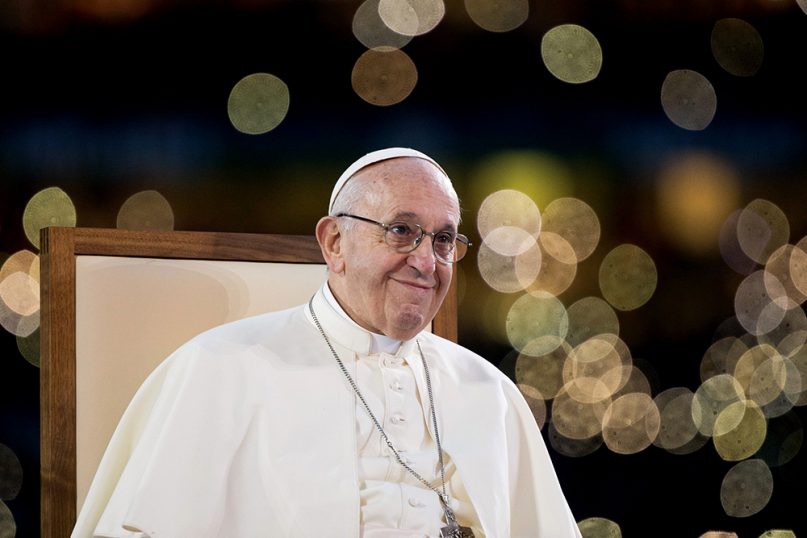
Pope Francis smiles during services at Croke Park, Dublin, on Aug. 25, 2018, during the World Meeting of Families 2018. (Photo by Maxwell Photography/WMOF2018)
His supporters praised him for fostering a climate of dialogue and frankness that allowed forms of criticism to be fearlessly expressed in the first place.
“He is a pope who opened the doors,” Borghesi said. “In little time, the pope was able to restore credibility to the church in the world. This pope cleared the air, allowing Catholics to meet the world of today with their head held high and with the desire to communicate the beauty of the Christian truth to the world.”
Francis leaves behind him a church still divided, but radically transformed. Cardinals meeting at the conclave to elect the next pope will have the task of deciding what identity the church should pursue from now on, knowing that the expectations of 1.3 billion Catholics and the world are forever changed.
